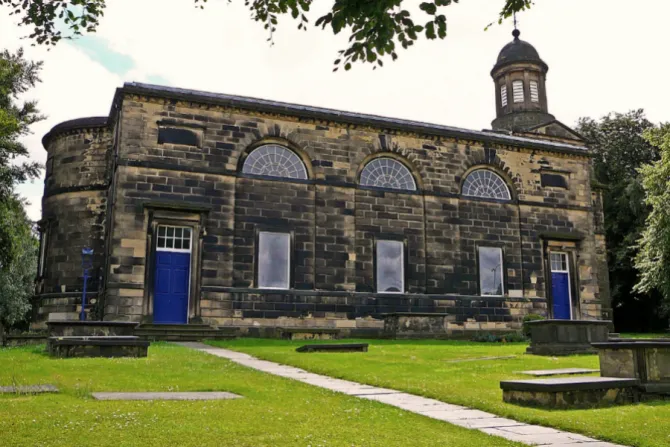London, England, Jun 29, 2017 / 05:08 am
The Methodist Church in Britain and the Church of England announced Sunday that each ecclesial community is considering a proposal that would enable the sharing of clergy between them.
Jonathan Baker, the Anglican bishop of Fulham, said that "(t)he separation between Anglicans and Methodists in Great Britain is a tear in the fabric of the Body of Christ. The proposals made in this report are offered as a means of helping to repair that tear."
The proposal, Mission and Ministry in Covenant, would in effect largely end the approximately 200-year-old division between the communities.
Methodism began in the 18th century as a movement within the Church of England, and broke off from the Anglican communion shortly after the 1791 death of one of its founders, John Wesley.
The Methodist Church in Britain currently ordains no bishops, and is instead headed by a conference, of whom the president is an ordained minister and the vice president a lay person. However, under the proposal being considered, the conference would be headed by a president-bishop, who will likely be ordained by a panel of three Anglican bishops.
In the Church of England, the proposal would mean the abandonment of 350-year-old laws stating that only ordained ministers may hold office in the Church.
Under the agreement, both denominations will maintain their governing structure. The Church of England governs on a diocesan system, where the Methodist Church in Britain is divided into districts and is largely oriented toward local communities.
After the birth of Methodism, the denomination in Britain became characterized by loosely associated non-conformist churches, hence the lack of an episcopal leadership model. However, in 1932, the non-conformist churches united as the Methodist Church in Britain but maintained their local approach. The denomination also emphasizes collegiality between the clergy and the laity.
The seeds for reunion between the ecclesial communities were first laid in 1946, when the Anglican Archbishop of Canterbury called for the Methodists to begin ordaining bishops. However, Anglo-Catholics – a group of Anglicans who strive to keep the Church largely aligned with Catholic theology and practice – in 1972 resisted this move due to differences in the clerical treatment of men and women.
The first woman to join the Anglican priesthood in Britain was ordained in 1994, after a 1992 measure passed the Anglican General Synod permitting female ordination. The Methodist Church has long allowed for female clerics.
More important strides have been taken since the beginning of this century. Mission and Ministry in Covenant has been under preparation for 14 years, since 2003 when the two communities signed a national covenant committing them to work toward fuller unity.
One of the last remaining barriers to full communion between the denominations fell in 2015 with the Church of England's first ordination of a female bishop. While this step allowed for the reunification of the two British denominations, it poses a significant barrier between them and reunification with the Catholic Church.
The merging of the denominations also signals a significant moment in British politics. The Church of England has long been aligned with the center-right Conservative Party, and the Methodists with the center-left Labour Party.
According to the Daily Mail, the Church of England has in the past been called "the Tory Party at prayer," and the Labour Party has been said to "owe more to Methodism than to Marx." These two parties comprise the dominant force in British politics: the Conservatives occupy 317 of the 650 seats in the House of Commons, and the Labour Party occupies 262.
Methodist churches in Britain have recently faced a severe decline in worshippers. According to the Daily Mail, they have lost a third of their members in the last 12 years, and in 2016 had only about 188,000 regular church-goers.


